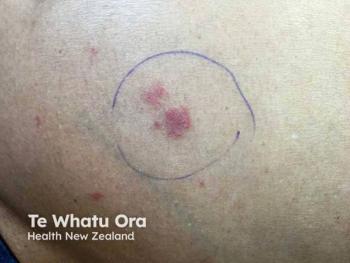
Use of Systemic vs Topical Treatment of AD
Andrew Blauvelt, MD, MBA, reviews systemic vs topical treatment of AD, discussion patient preferences as a factor for treatment selection.
Episodes in this series

Jonathan I. Silverberg, MD, PhD, MPH: You have a bunch of systemic options to choose from. How do you decide?
Elizabeth Swanson, MD: It’s an embarrassment of riches. We went from 0 to hero in a matter of years, and that’s great. I’m never going to complain about the choices we have. I break it down when I’m talking with patients about either biologics, to include dupilumab and tralokinumab—depending on age—or JAK inhibitors, to include abrocitinib and upadacitinib, as long as they’re age 12 and up. I lay out the pros and cons of each and let the patient decide. I do mostly shared decision-making and leave the final decision in their hands. Some patients are incredibly shot adverse, so a pill sounds better to them. Others like that dupilumab has been around for a while with excellent safety, and they’re a little tentative with an oral JAK inhibitor. I lay out the pros and cons and see what comes flying back at me.
Jonathan I. Silverberg, MD, PhD, MPH: I want to flip this 1 to Dr Blauvelt. We’ve had this discussion before about how you decide when a topical is enough? When do you say “All right. We might still use topicals, but it’s time to step up to a systemic therapy?”
Andrew Blauvelt, MD, MBA: I had a small private practice for many years, but I’ve done mostly clinical trials. I wanted to share the conversation—which you talked about, Lisa—of biologics vs JAKs that I’ve been having for years in context of clinical trials. There were 2-plus years where we had open trials for tralokinumab and/or lebrikizumab, and abrocitinib and upadacitinib at the same time. I’d do what we do in practice—I’ve done it for 3 or 4 years—going through the pros and cons of each class and then hearing what they say. It’s been fascinating that with a pretty large end of having these conversations, but in the context of clinical trial choice, it’s been about a half and half.
Jonathan I. Silverberg, MD, PhD, MPH: Absolutely. There’s no 1 type of patient. There’s something for everyone, which is great. You mentioned the idea of shared decision-making and how important that is. It takes time, though, and it’s not easy to do.
Elizabeth Swanson, MD: I agree.
Jonathan I. Silverberg, MD, PhD, MPH: Sometimes, when I have that shared decision-making conversation, I think it’s going to go 1 way and then it goes in completely the other direction. Sometimes you can’t anticipate it.
Elizabeth Swanson, MD: That’s so true.
Transcript edited for clarity
Newsletter
Like what you’re reading? Subscribe to Dermatology Times for weekly updates on therapies, innovations, and real-world practice tips.























